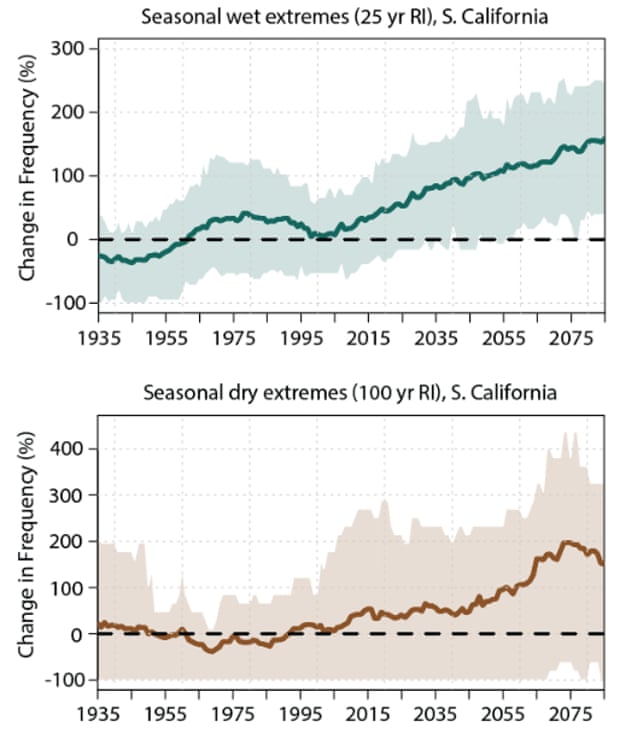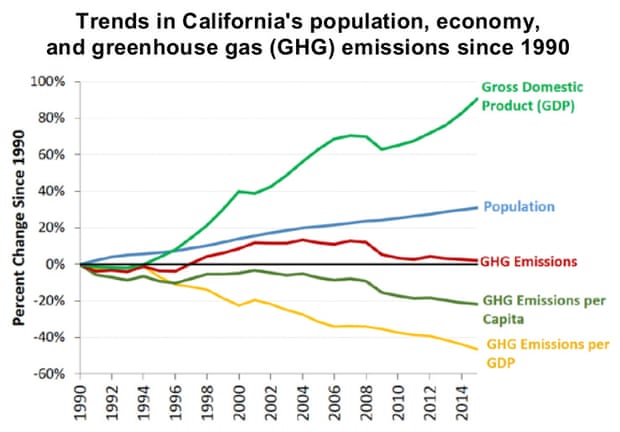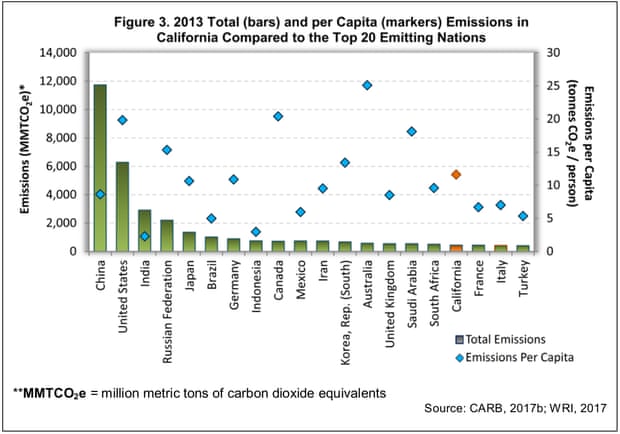
In 1988 – the same year Nasa’s James Hansen warned Congress about the threats posed by human-caused global warming – water expert Peter Gleick wrote about the wet and dry extremes that it would create for California:
California will get the worst of all possible worlds – more flooding in the winter, less available water in the summer.
Three decades later, California has been ravaged by just this sort of weather whiplash. The state experienced its worst drought in over a millennium from 2012 to 2016, followed immediately by its wettest year on record in 2017. The consequences have been similarly extreme, including hellish record wildfires, narrowly-avoided catastrophic flooding at Oroville Dam, and deadly mudslides.
A study published last month in Nature Climate Change found that these wet and dry extremes will only worsen in California as temperatures continue to rise. As lead author Daniel Swain wrote:
most of California will likely experience a 100 – 200% increase in the frequency of very wet November-March “rainy seasons” … California will likely experience an increase of anywhere from 50% to 150% (highest in the south) in the frequency of very dry November-March periods … Since California is so dependent on precipitation during its relatively brief winter rainy season, even a single dry winter can quickly lead to adverse drought impacts upon agriculture and the environment.

Relative change (in percent) in extremely wet seasons and extremely dry seasons by 2070-2100 in Southern California. Illustration: Swain et al. 2018, Nature Climate Change
The most dramatic impacts include wildfires that are larger and more frequent, and the most severe drought since recordkeeping began. Underlying these events is a long-term warming trend that has accelerated since the mid-1970s. In addition, spring snowmelt runoff is decreasing, sea levels are rising, glaciers are shrinking, lakes and ocean waters are warming, and plants and animals are migrating.
In short, climate change will continue to have severe consequences for California, whose economy recently surpassed that of the UK to become the fifth-largest in the world. But the state has also become a leader in trying to minimize those climate damages.
In 2006, Governor Arnold Schwarzenegger signed the Global Warming Solutions Act into law, whose most significant component was a carbon cap and trade system. The bill required California to reduce its greenhouse gas pollution to 1990 levels by 2020, and the state is on track to meet that goal despite a growing population and thriving economy with an $8.8bn surplus. California has proved that an economy can thrive with a price on carbon pollution in place.

California greenhouse gas emissions, population, and GDP. Illustration: California Office of Environmental Health Hazard Assessment
In 2016, California passed an update to the California Global Warming Solutions Act requiring a 40% reduction in greenhouse gas pollution by 2030 on the way to the target 80% reduction below 1990 levels by 2050. California’s annual per capita emissions (11.5 tonnes of CO2-equivalent per person) are currently on par with those of Germany and Japan, and 40% lower than the US average.

Greenhouse gas emissions in California and various countries. Illustration: California Office of Environmental Health Hazard Assessment
California is investing in climate change solutions, like pilot projects using farms to sequester carbon. More than half of the state’s electricity is generated by carbon-free sources (21% hydroelectric, 12% solar, 9% nuclear, 6% wind, 6% geothermal), and another 43% comes from natural gas.
Posted by dana1981 on Monday, 14 May, 2018
 |
The Skeptical Science website by Skeptical Science is licensed under a Creative Commons Attribution 3.0 Unported License. |